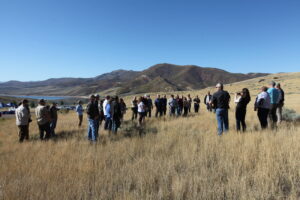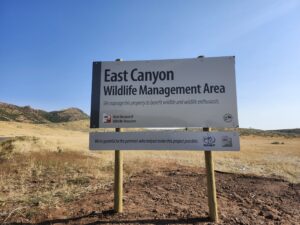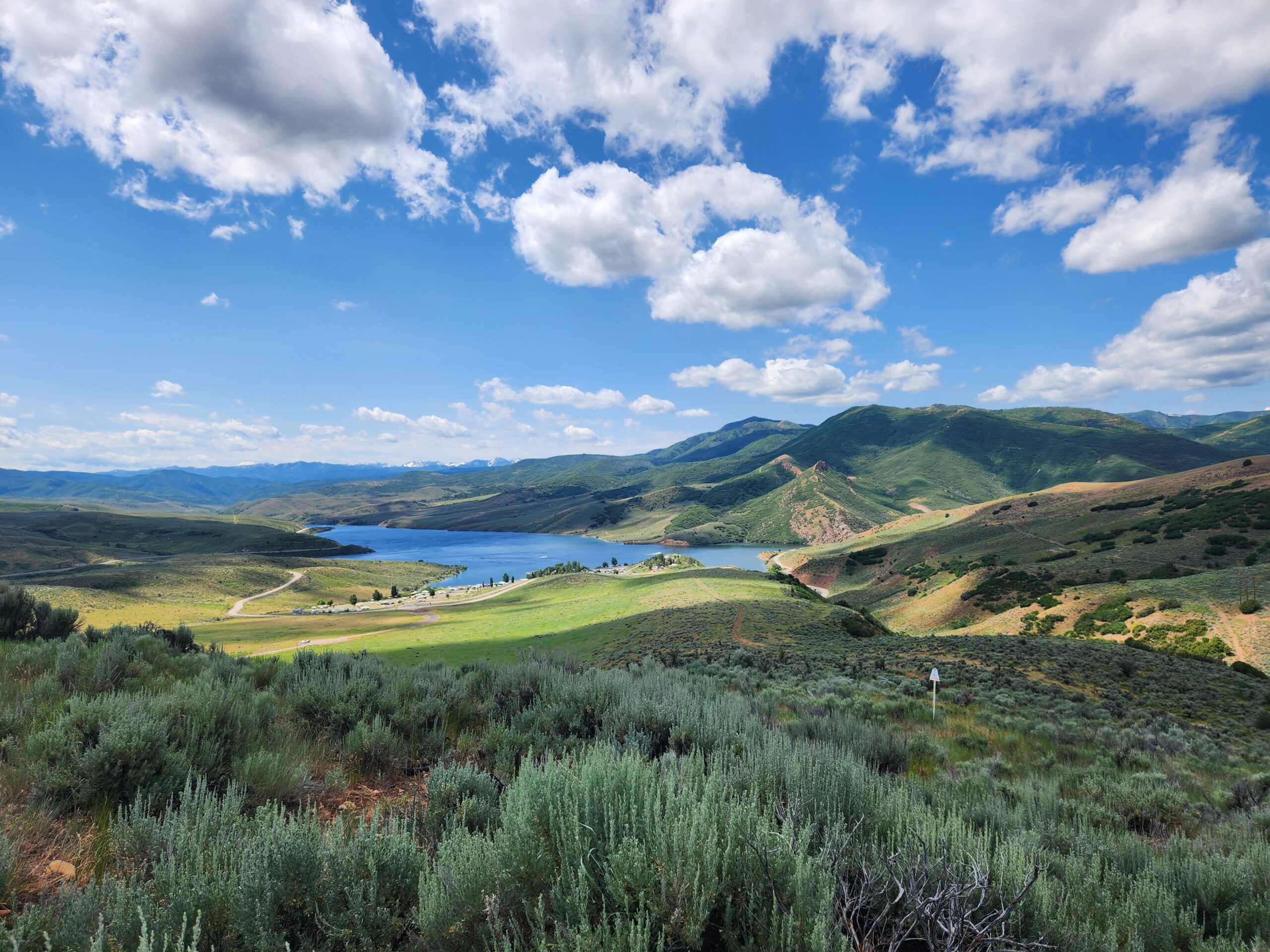It could not have been a better day, a bluebird day. With the sun shining down not even a half-hour drive from the Salt Lake Valley, representatives of the Rocky Mountain Elk Foundation joined their partners at the Utah Division of Wildlife Resources (DWR), legislative and county leaders, and Utah Division of State Parks near the East Canyon Reservoir in northern Utah.
Together, they cut the ribbon to celebrate a project completing the conservation of 2,600 acres of wildlife habitat, while also opening public access to it. Specifically, the transaction adds 400 acres to East Canyon State Park and expands the East Canyon Wildlife Management Area (WMA) by about 40 percent in size or 2,200 acres. The project site lies within a critical mule deer migration corridor in a region home to more than 20,000 mule deer, 2,900 elk and moose, turkey, mountain lions and other species.


“Understanding the importance of this property for wildlife and recreation, this is RMEF’s latest example of our successful partnership with Utah DWR, which has an outstanding track record,” said Jenn Doherty, managing director of Mission Operations. “RMEF is supported by hunters and that support has allowed us to come to the table at times like this. And we will keep coming to the table quality habitat and hunting access.”
Dating back to 1987, RMEF worked with partners to complete 859 RMEF conservation and hunting heritage projects in the Beehive State with a combined value of more than $184.2 million that conserved or enhanced more than 1.4 million acres of habitat and opened or improved public access to 34,736 acres statewide.
RMEF found out about a $1.3 million funding shortfall when DWR was trying to buy the East Canyon property, so it stepped up and bridged the gap.
There are two parking areas on the DWR-managed WMA. Since the land supplies winter range for elk and mule deer, it is closed annually from January 1 to the second Saturday in April to give animals space.
“Congratulations to Morgan County and all of Utah. Thank you to elected officials, hunters, the public, Utah state parks and DWR,” added Doherty.
(Photo credit: Utah Division of Wildlife Resources)

